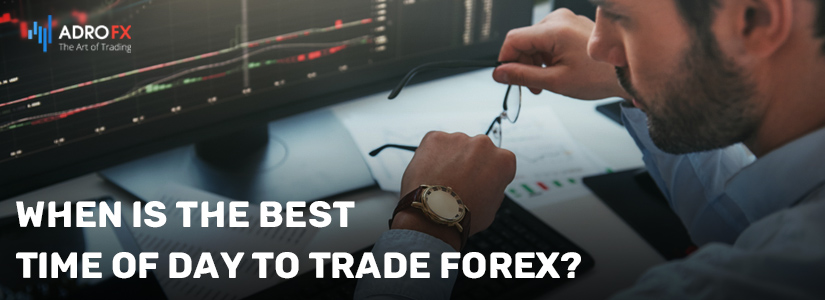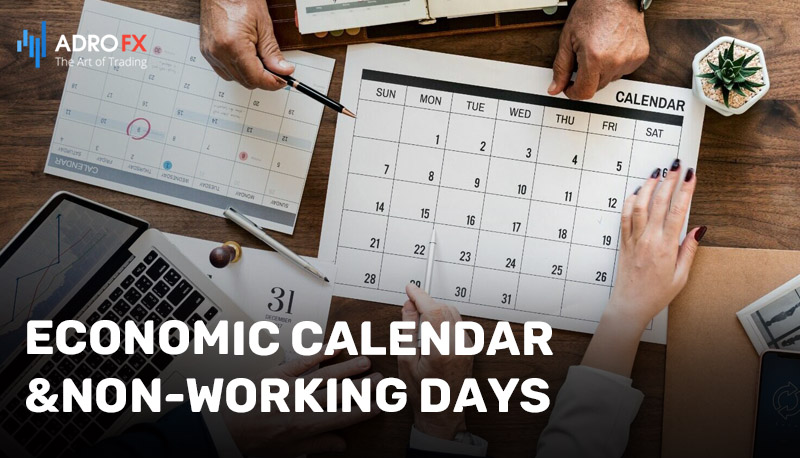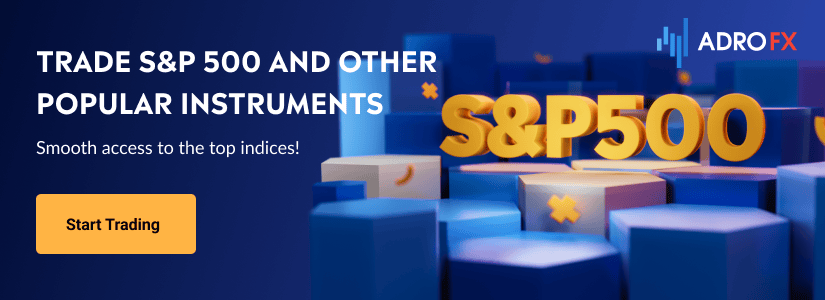When Is the Best Time of Day to Trade Forex?

The forex market, being the world's largest and most liquid financial market, witnesses the trading of trillions of dollars on a daily basis. As a market that operates round the clock, traders of forex have the advantage of trading at any time. Nevertheless, determining the most favorable time to trade forex is a commonly asked question, particularly by novice traders. The answer to this question depends on a variety of factors, including market volatility, liquidity, and trading sessions. In this article, we will explore these factors in detail and discuss the best times of day to trade forex based on your trading style and preferences. Whether you are a day trader, swing trader, or long-term investor, understanding the best times to trade forex can help you optimize your trading strategy and potentially improve your trading performance. So, let's dive in and explore the best times to trade forex.
What Affects Price Changes on the Market
There are a variety of factors that can affect price changes in the market. These factors can be broadly categorized as fundamental or technical factors.
Fundamental factors include economic indicators, such as inflation, interest rates, GDP, and employment figures, as well as geopolitical events, such as wars, elections, and natural disasters. These factors can impact market sentiment and investor confidence, which in turn can affect the demand and supply of assets and ultimately their prices.
Technical factors include market trends, chart patterns, trading volumes, and price levels. Technical analysts use these factors to identify potential price movements and make trading decisions based on them.
In addition to these factors, other factors that can affect price changes in the market include changes in regulations, shifts in investor sentiment, and unexpected news or events that can impact market conditions.
Overall, understanding the various factors that can affect price changes on the market is crucial for any trader looking to make informed trading decisions. By staying up-to-date on these factors and conducting a thorough analysis, traders can potentially identify beneficial trading opportunities and manage their risks effectively.
Types of Trading Sessions
There are four main types of trading sessions based on the time of market activity: Asian, European, American, and Pacific. Each session has its own characteristics and trading opportunities.

Asian session: The Asian trading session starts with the opening of the Tokyo market at 7 PM EST (midnight GMT). The Asian session is known for low volatility, with currency pairs often trading in a narrow range. However, there can be some volatility during news releases from Japan, China, and Australia.
European session: The European trading session starts with the opening of the London market at 3 AM EST (8 AM GMT). The European session is known for high volatility, with currency pairs often experiencing large price movements. The session is also characterized by significant trading volumes and liquidity.
American session: The American trading session starts with the opening of the New York market at 8 AM EST (1 PM GMT). The American session is known for high volatility, with currency pairs often experiencing large price movements. The session is also characterized by significant trading volumes and liquidity.
Pacific session: The Pacific trading session starts with the opening of the Sydney market at 5 PM EST (10 PM GMT). The Pacific session is known for low volatility, with currency pairs often trading in a narrow range. However, there can be some volatility during news releases from New Zealand, Australia, and Japan.
Overall, understanding the characteristics and opportunities of each trading session can help traders optimize their trading strategies and potentially improve their trading performance. Traders should consider their trading style and preferences when selecting the best trading session for them.
How to Choose the Best Time to Trade Forex
Choosing the appropriate time to trade forex is essential for any trader looking to optimize their trading strategy and potentially improve their trading performance. Here are some criteria to consider when selecting the best time to trade forex.
Time of Day
Majors and highly liquid crosses exhibit maximum volatility during the European and American sessions. The ideal scenario for trading is to look for entry points at the opening of London, following a position before the American opening, and add or reverse after New York comes in.
Pairs involving the Australian/New Zealand dollar and the Japanese yen can show enough activity during the Pacific and Asian sessions. The volatility is low, but you can benefit from movements of 20-50 pips. During the news releases, there are jerks of 50-70 pips, but such impulses are rare for those sessions. The volatility on "European pairs", such as EUR/GBP and GBP/CHF is particularly low.
The tactics of night scalping in the "quiet market" are not suitable for Europe and America. This style implies trading large volumes with small returns. You need periods when large traders are out of the market and the chart behavior is easier to predict. It is possible to work, for example, on a chart rebound from borders of Bollinger Bands, the probability of their breakout is low at night.
Standard strategies ideally fit in the European and American sessions.
Also, trading hours correspond to a person's activity period. For example, traders in the time zones of Europe area are comfortable trading both on the European and American sessions. Speculators from Asia and the United States are in less favorable conditions due to the big-time difference with Europe.
Day of the Week
During the week the nature of price movements is not uniform. This can be explained by the psychological peculiarities of the big traders:
- Monday - many take a wait-and-see position. Important news is rarely released in Europe and the USA at the beginning of the week, and a flat market is highly probable.
- Tuesday - Thursday, volatility is at its highest. These days are good for trading.
- Friday - at the end of the week some traders secure gains, not willing to take risks, and leave positions open for the weekend. There may be movements against the main trend.
If we consider the weekly candlestick formation, its shadows are formed on Monday and Friday. The movements from Tuesday to Thursday form a body.
As for volatility, it varies depending on the day of the week, but not as much as intraday. This factor can be neglected in trading forex.
Time Frame
As the time frame grows, the importance of selecting the trading time decreases:
If you trade on time frames up to H1, you need to link your work to the schedule of trading sessions, the schedule of significant news releases, holidays, and weekends.
H4 - during 1 trading session only 2 4-hour candles are formed, and the importance of choosing the time of trading during the day is reduced. But the time of important statistics release is still considered. With this style of trading entry points are formed many times less frequently than, for example, on M5-M15, it is enough to estimate the market condition 3-4 times a day.
D1 and higher - the schedule of trading sessions does not play a special role. Only the release dates of the most important news and holidays are taken into consideration. Market conditions are estimated once a day, the signals appear only at the close of the daily candle.
The above recommendations are mostly true for the forex market. On the stock market and commodities, one should follow the exchanges, where the maximum volume of an appropriate asset is traded.

Economic Calendar
In forex, it is enough for a trader to take into account the standard economic calendar. It publishes the dates of major macroeconomic statistics and a system of filters should filter out the news with low "weight".
The first Friday of each new month is particularly important. On this day, the Nonfarm Payrolls report is published, which indicates the number of jobs created outside the United States agricultural sector. It is considered one of the most important statistical indicators.
The stock market takes into account the dates of quarterly reports and ex-dividend dates when the register of shareholders is formed for the payment of dividends. A quarterly report can trigger turbulence and a dividend gap is often formed after the ex-dividend date.
Non-working Days
Non-working days can be classified in several ways:
- Holidays are celebrated simultaneously in most or all of the world.
- Local holidays, such as Columbus Day in the United States.
- A pause in trading due to force majeure events. This is rare, stock exchanges may pause trading for days after terrorist attacks, or natural disasters. Forex trading is not paused.
When there are local holidays, forex trading goes on, but liquidity is lower. This leads to lower volatility and the feasibility of working on such days is questionable. Especially important are the holidays in the USA and Europe - they can "freeze" one of the biggest trading sessions.
The Best Time to Trade Forex for Beginners
As a beginner in forex trading, it's important to understand the best time to trade currency pairs to potentially maximize your earnings and minimize your risks. Here are some tips to consider:
- Trade during the European and American sessions: The European and American sessions are generally the most active and volatile trading sessions. As a beginner, it's best to trade during these sessions because there is a higher trading volume and more liquidity. This can potentially help you get better prices and minimize your risks.
- Avoid trading during the Asian session: The Asian session is generally known for lower volatility and liquidity, which can make it more difficult for beginners to find good trading opportunities. However, some currency pairs such as AUD/USD and NZD/USD can be more active during the Asian session due to economic data releases from Australia and New Zealand.
- Look out for economic news releases: Economic news releases can cause volatility in the market and create trading opportunities. As a beginner, it's important to keep an eye on economic news releases and try to trade during the periods when the news is released.
- Consider trading the major currency pairs: The major currency pairs, such as EUR/USD, GBP/USD, and USD/JPY, are generally more liquid and less volatile than other currency pairs. Trading these pairs as a beginner can help you minimize your risks and learn about trading in a more stable environment.
- Use a demo account to practice: Before trading with real funds, it's important to practice trading using a demo account. This can help you get a feel for the different trading sessions and currency pairs and develop a trading strategy that works best for you.
Overall, as a beginner, it's best to focus on trading during the European and American sessions, avoid the Asian session, look out for economic news releases, consider trading major currency pairs, and use a demo account to practice. By following these tips, you can potentially increase your chances of success in the forex market.
Summary
Summing up, the best time to trade forex depends on a variety of factors, including market volatility, liquidity, and trading sessions. Fundamental and technical factors can impact price changes in the market, and traders need to stay informed about them to make informed trading decisions. Understanding the characteristics and opportunities of each trading session is also essential for traders looking to optimize their trading strategies. Moreover, traders need to consider their trading style and preferences when selecting the best trading session for them. Finally, traders should also consider the time of day and the day of the week to optimize their trading strategy and potentially improve their trading performance. By taking all of these factors into account, traders can make informed trading decisions and potentially achieve better results.
About AdroFx
Established in 2018, AdroFx is known for its high technology and its ability to deliver high-quality brokerage services in more than 200 countries around the world. AdroFx makes every effort to keep its customers satisfied and to meet all the trading needs of any trader. With the five types of trading accounts, we have all it takes to fit any traders` needs and styles. The company provides access to 115+ trading instruments, including currencies, metals, stocks, and cryptocurrencies, which make it possible to make the most out of trading on the financial markets. Considering all the above, AdroFx is the perfect variant for anyone who doesn't settle for less than the best.









